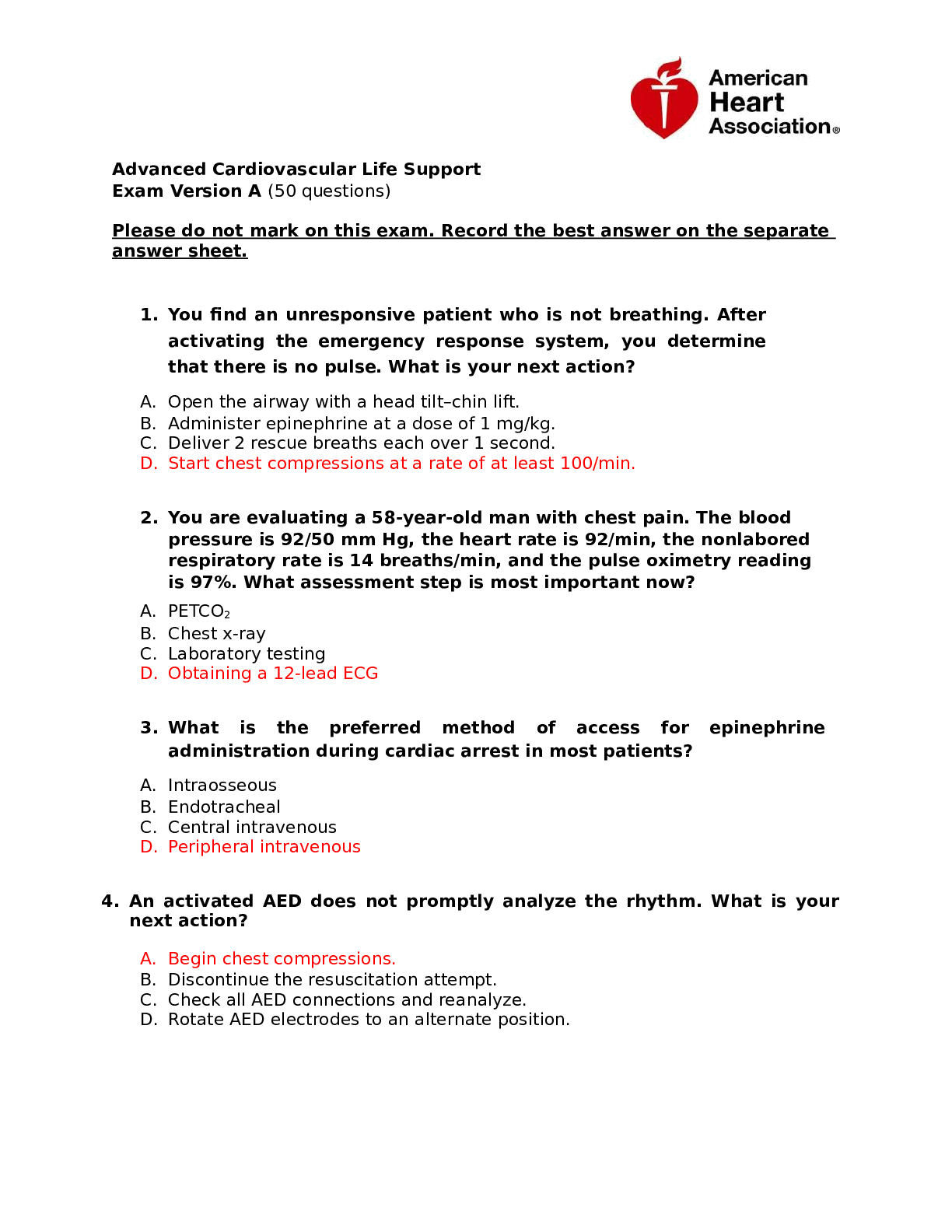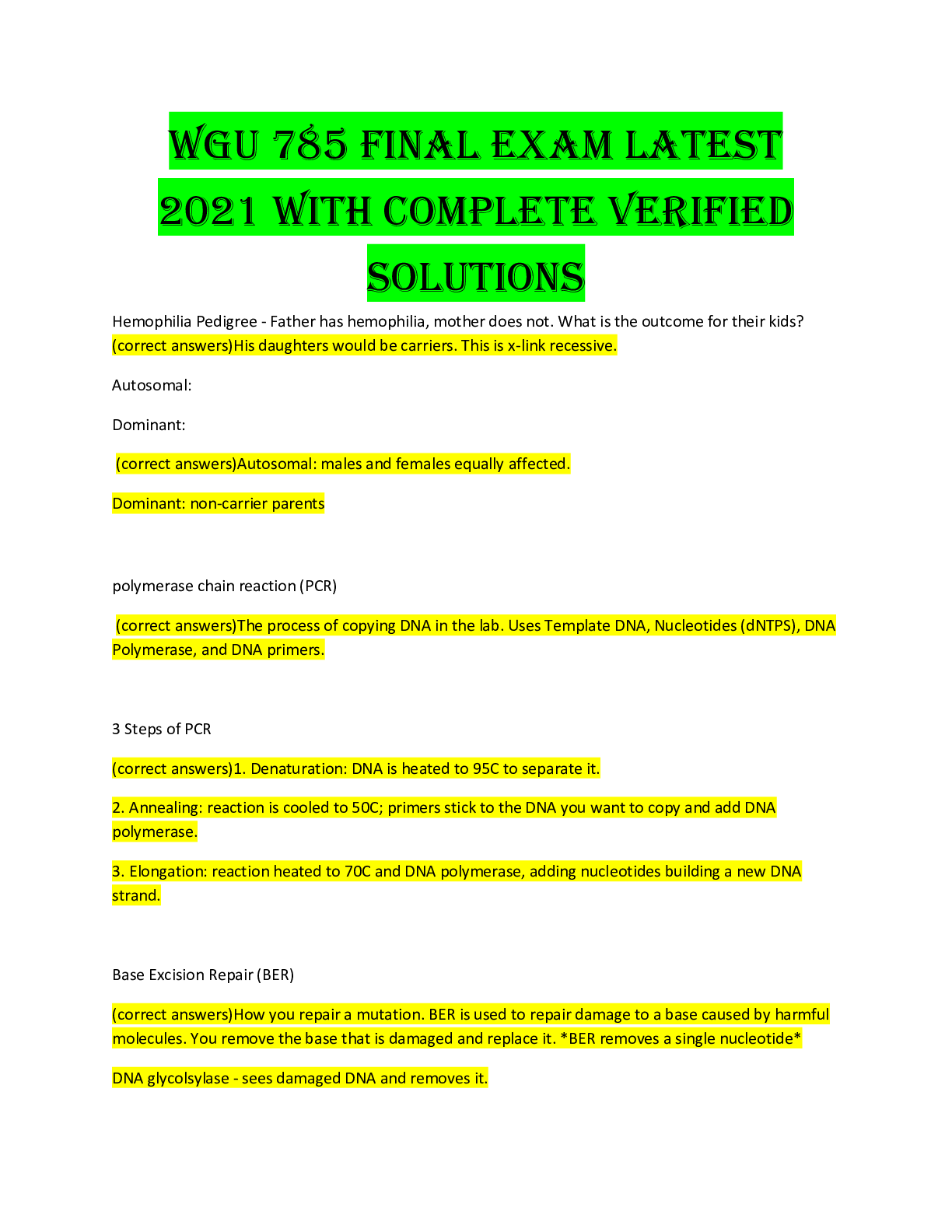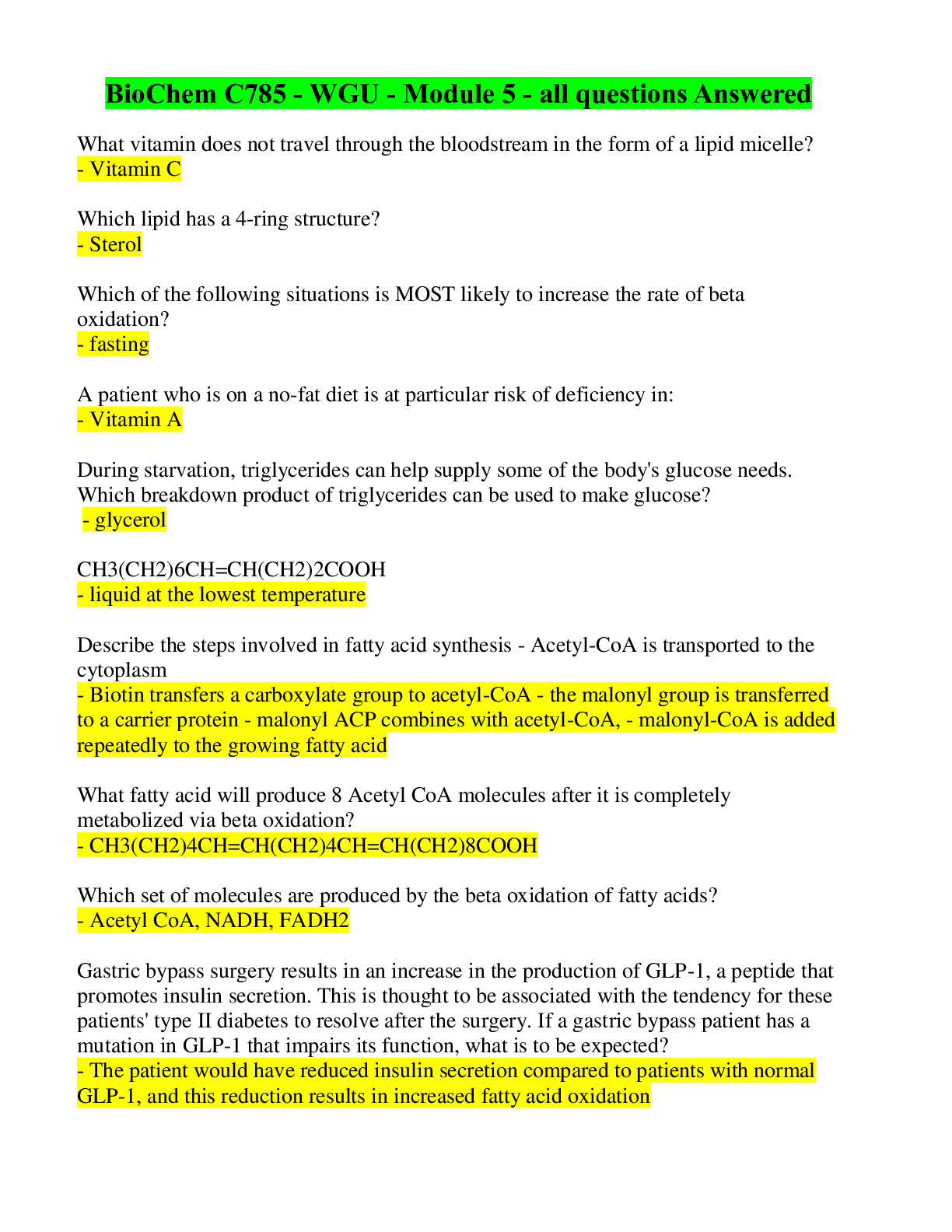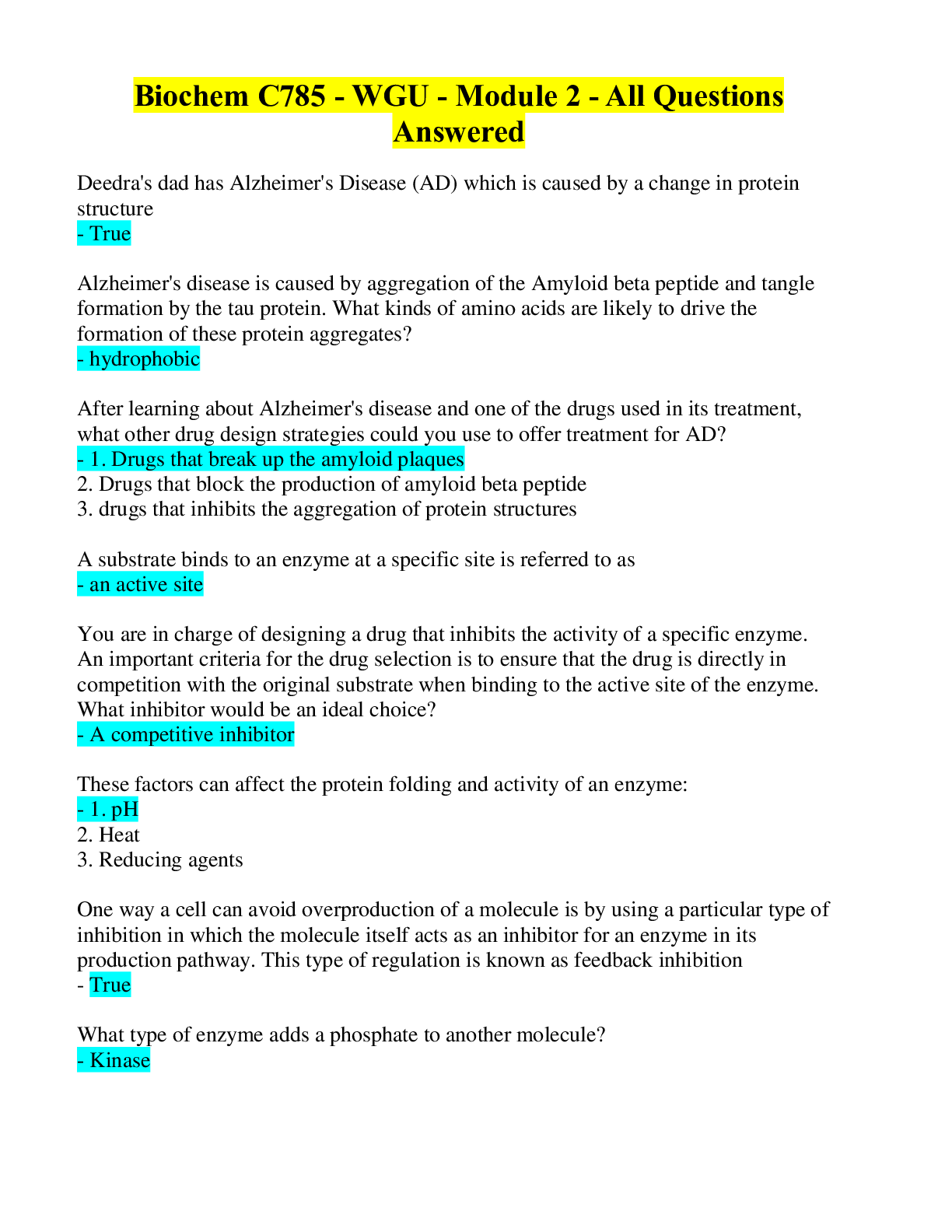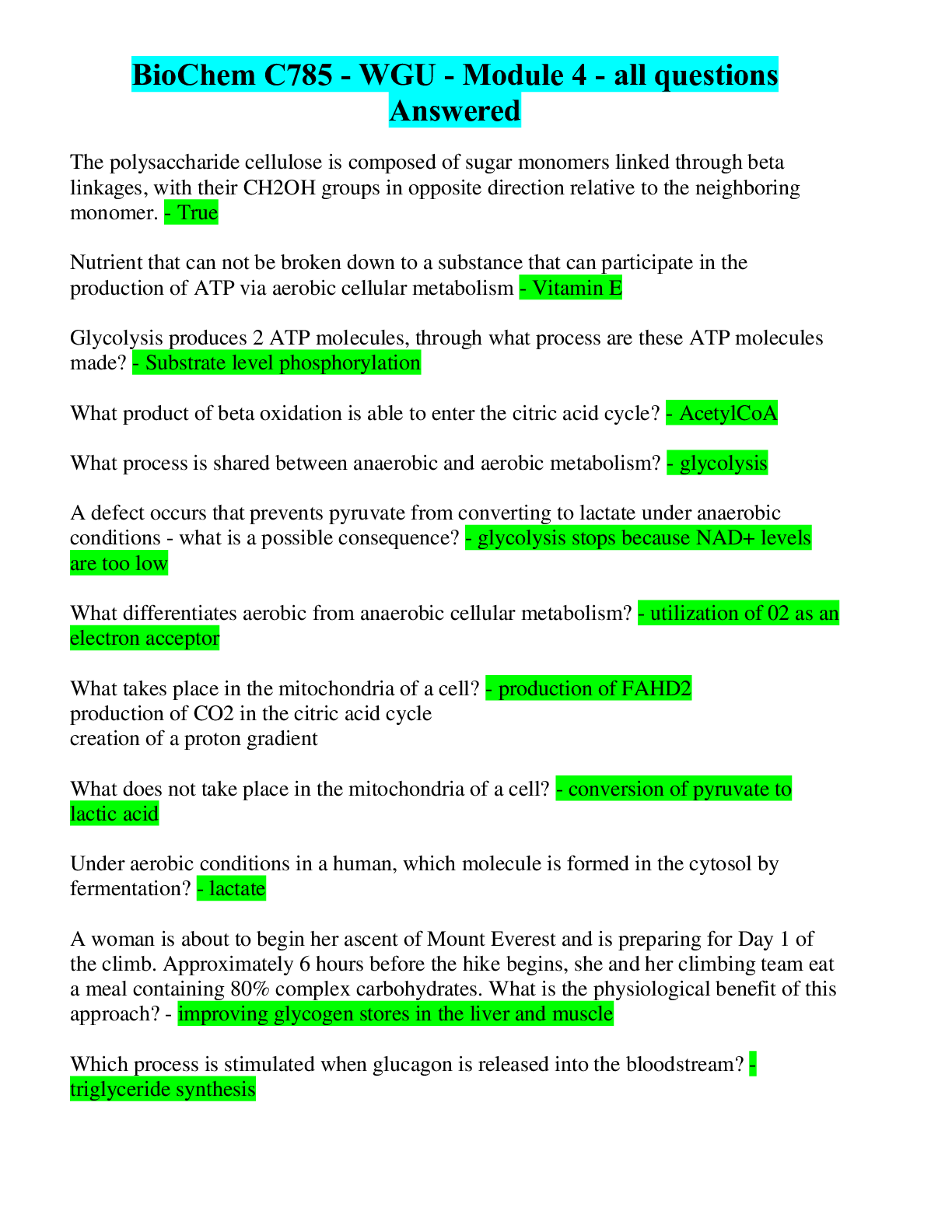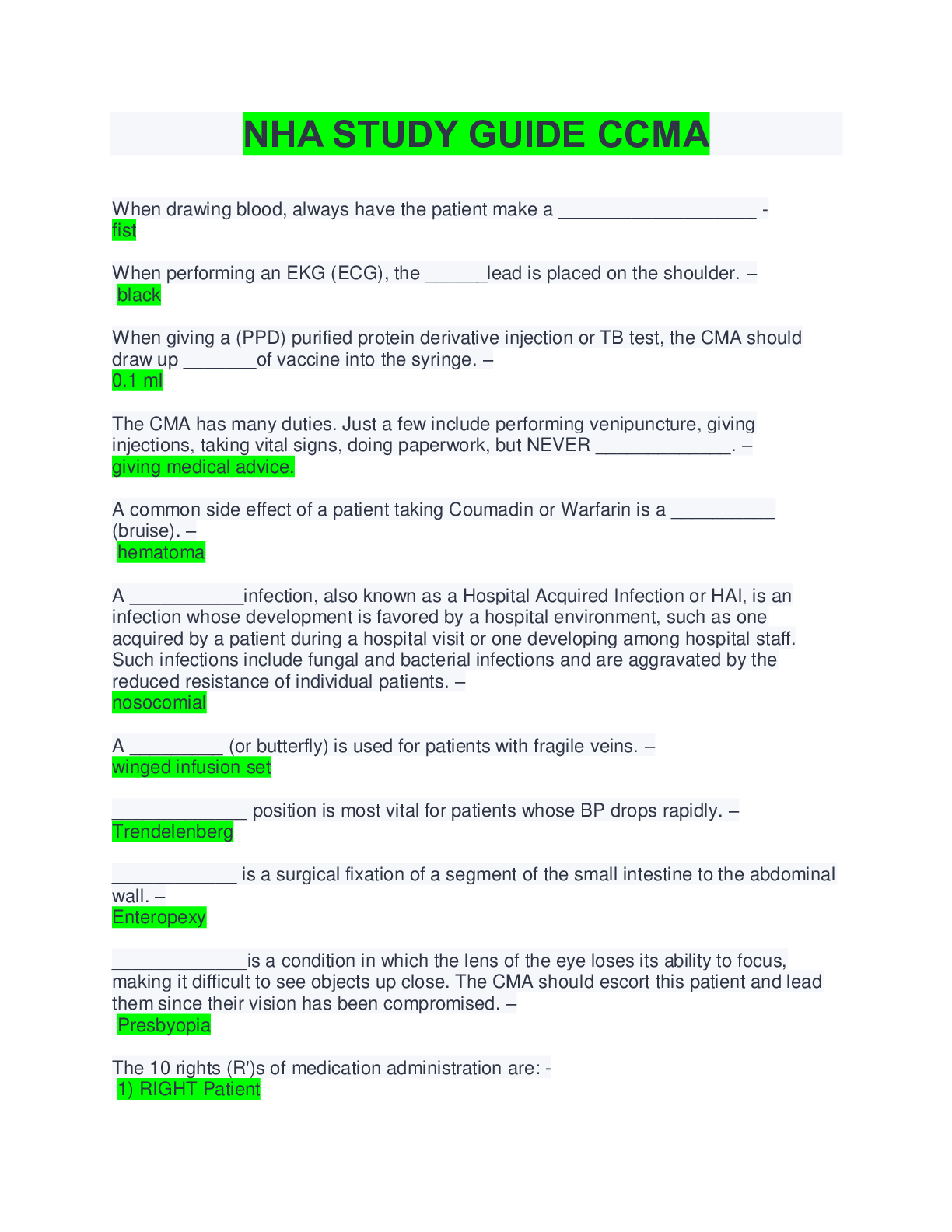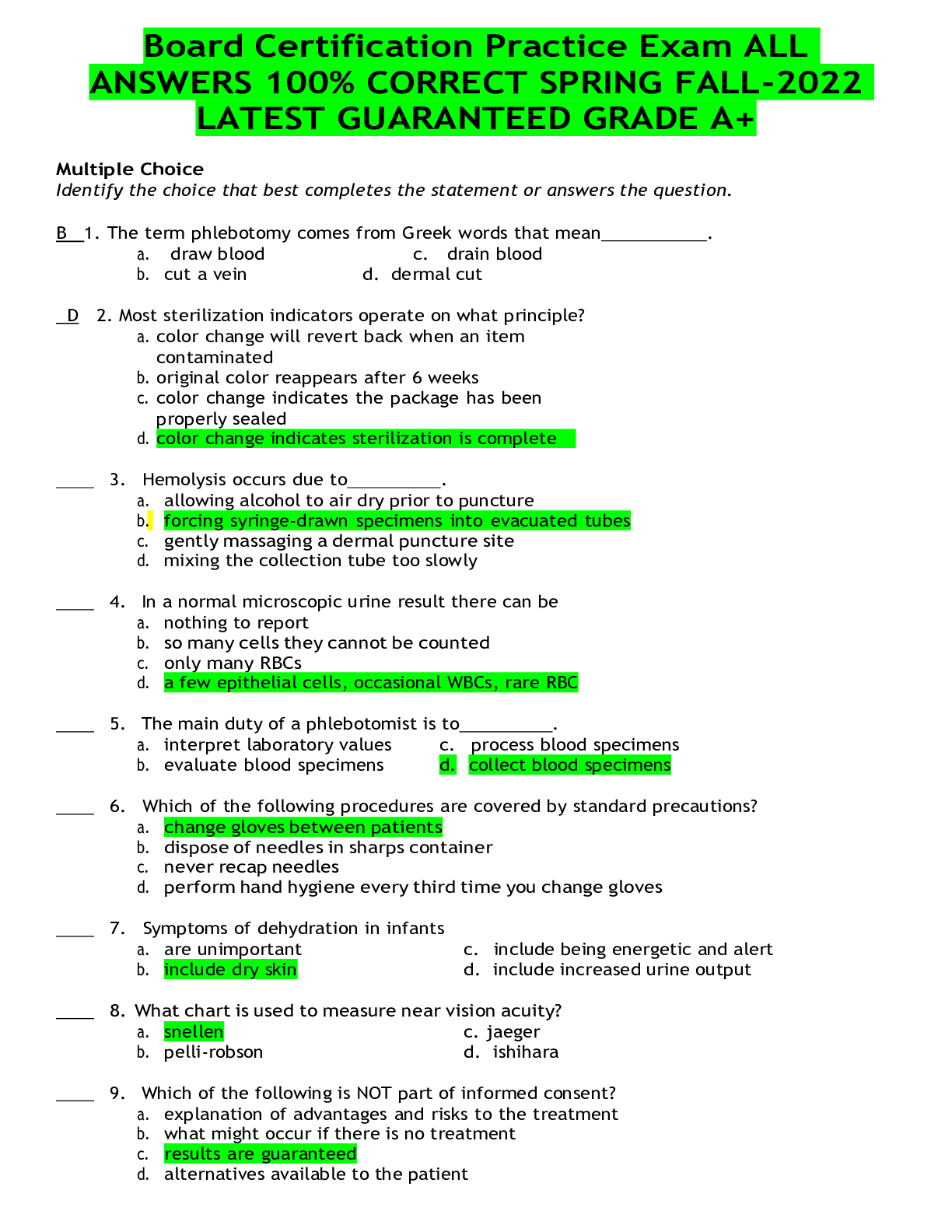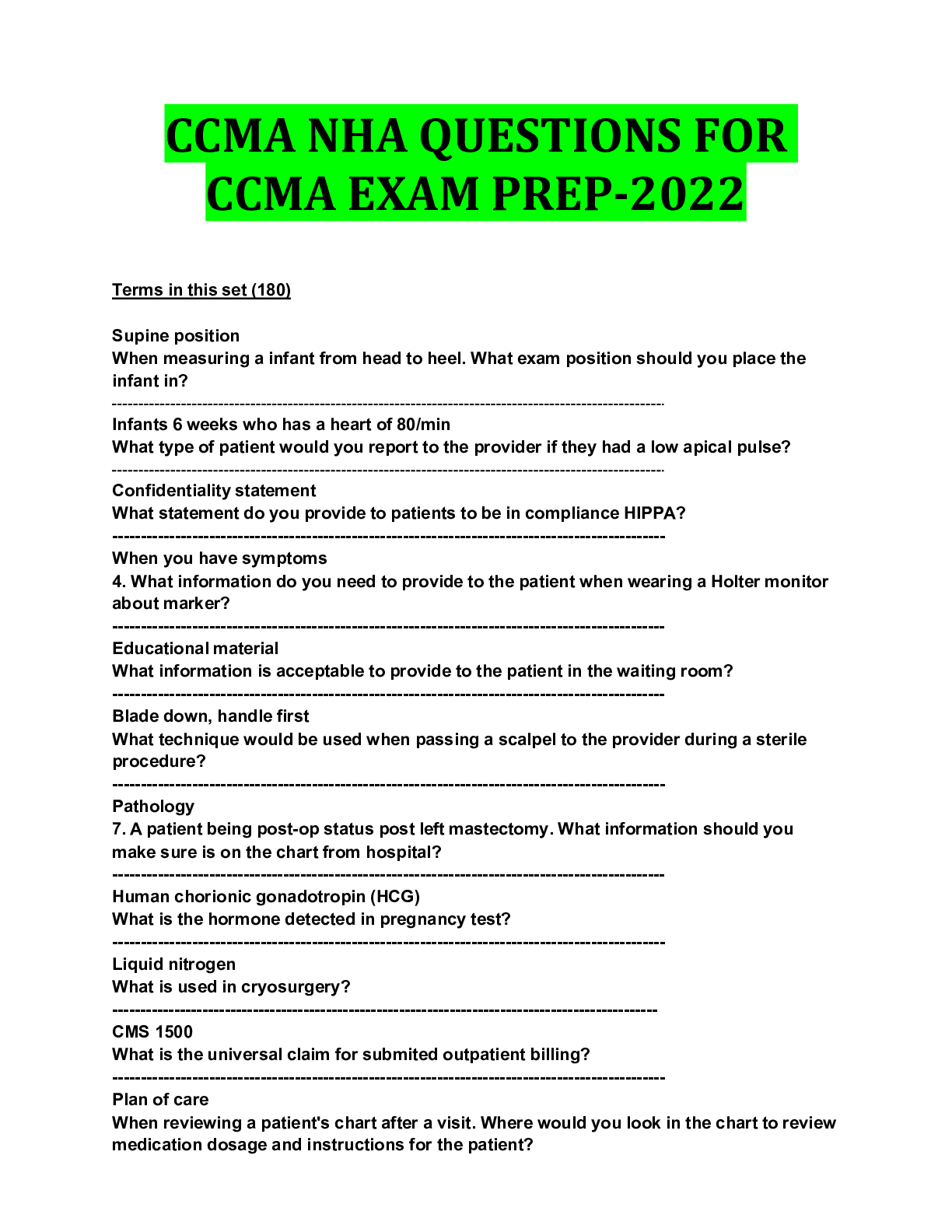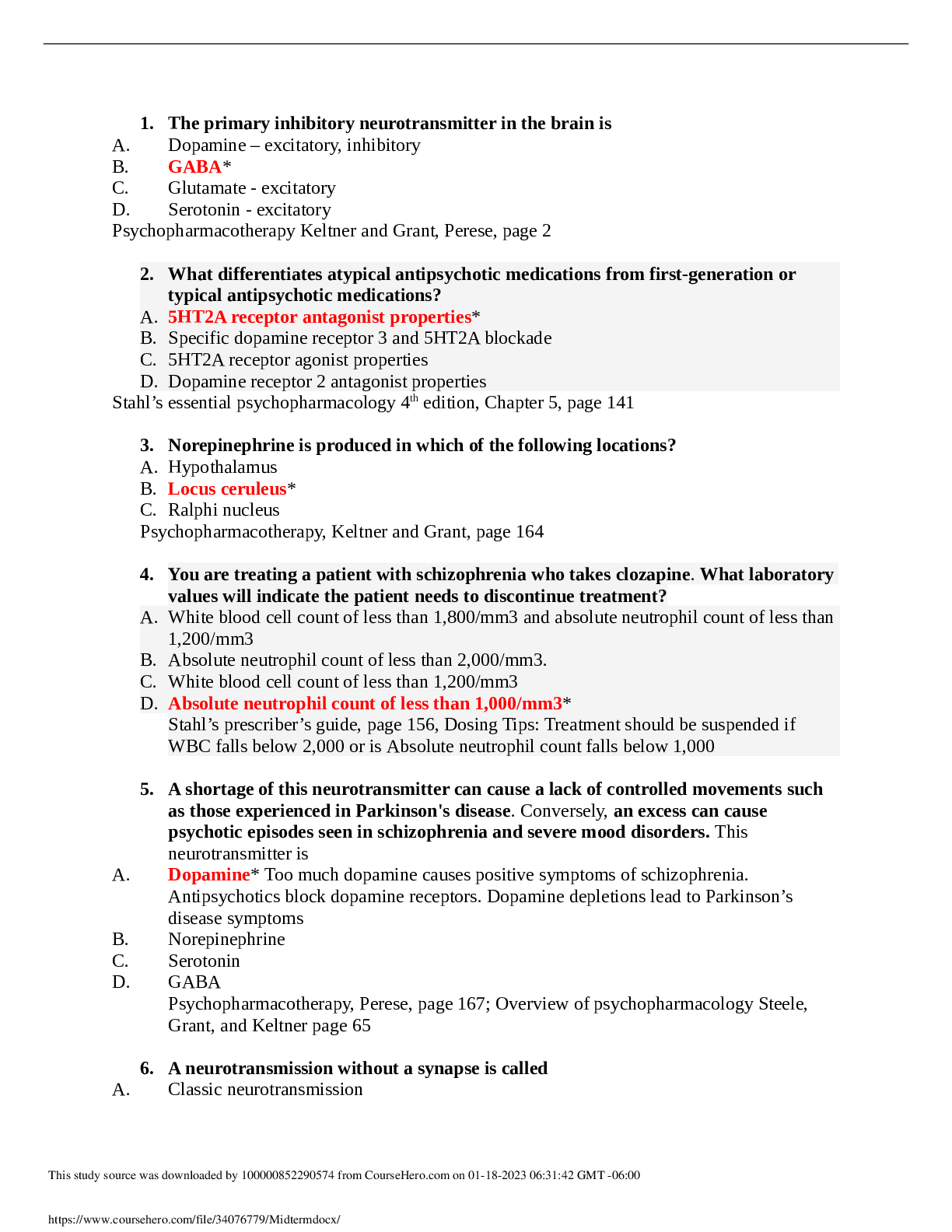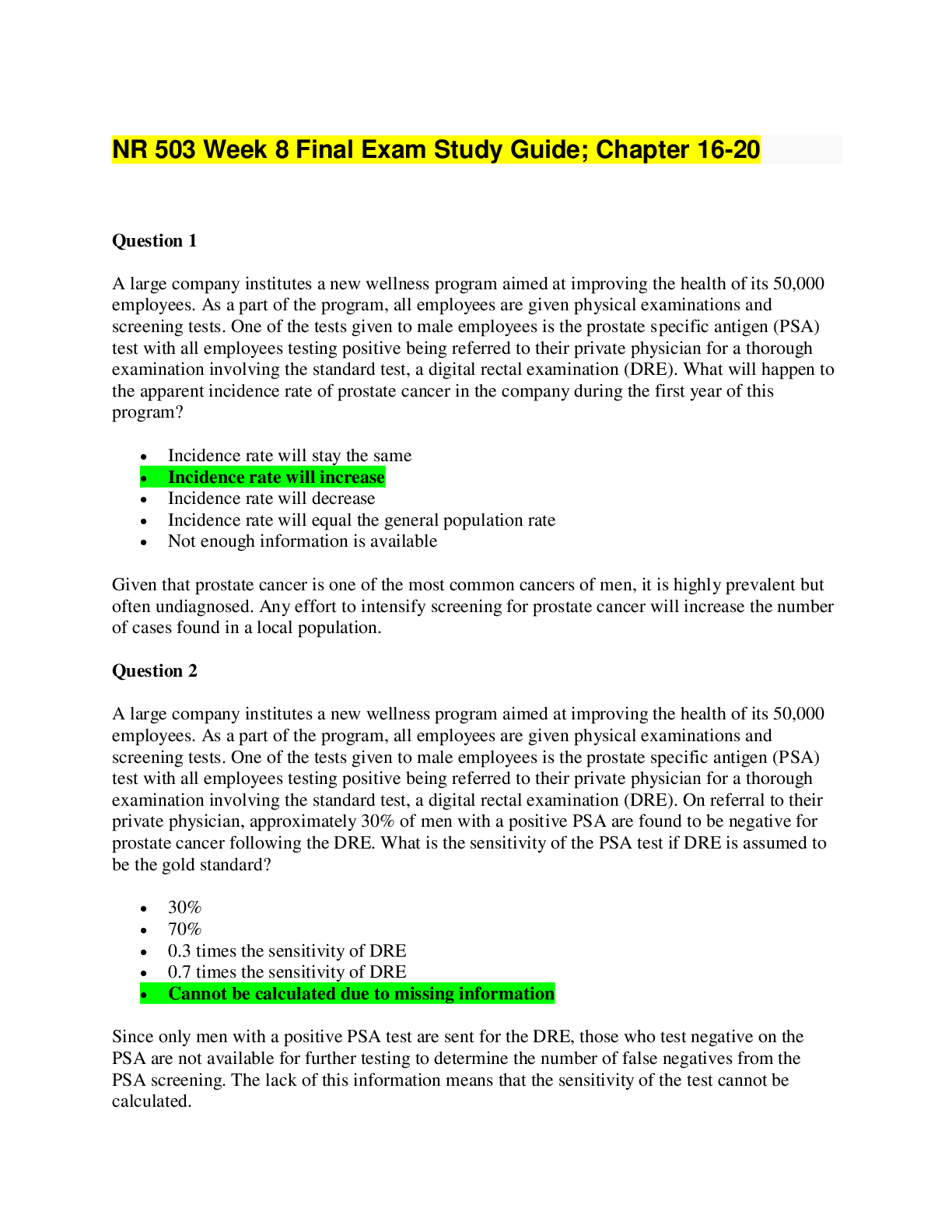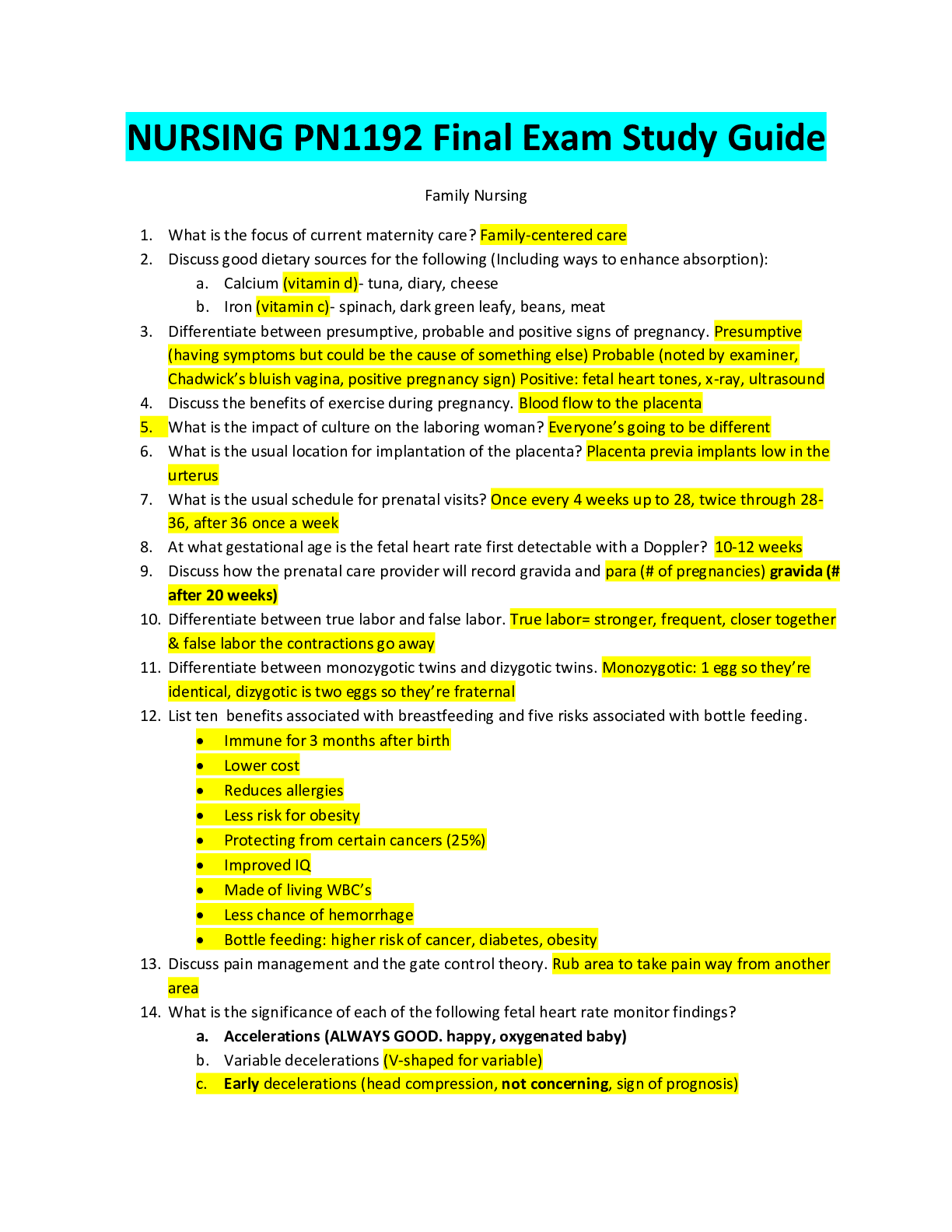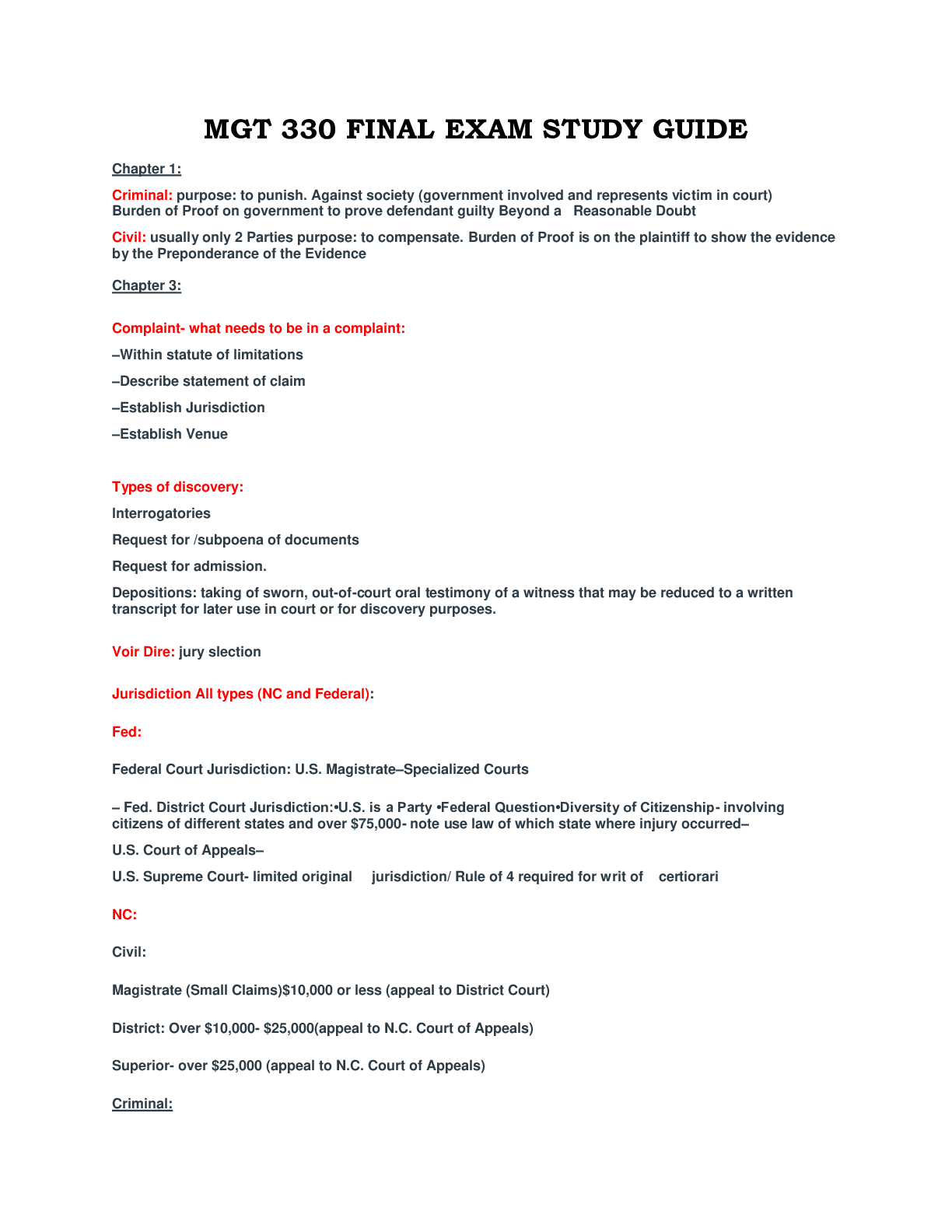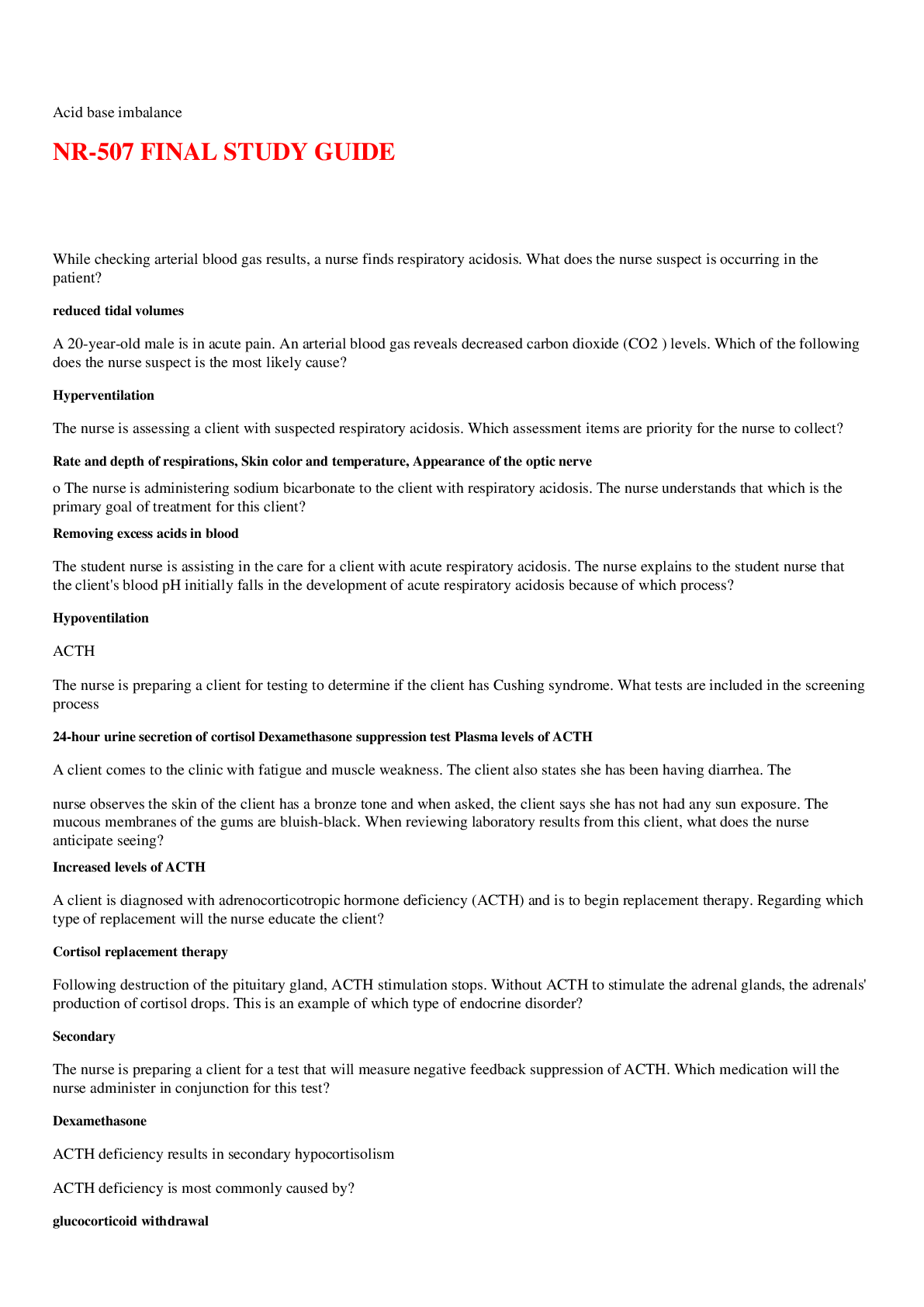*NURSING > QUESTIONS & ANSWERS > BIOS256 Final Exam Study Guide rated 5 star complete for your studies (All)
BIOS256 Final Exam Study Guide rated 5 star complete for your studies
Document Content and Description Below
1 The urinary system does all of the following, EXCEPT it A secretes excess glucose molecules B regulates blood volume C contributes to stabilizing blood pH D eliminates organic waste products E ... regulates plasma concentrations of electrolytes 2 Conical structures that are located in the renal medulla are called A pyramids B renal columns C renal pelvises D nephrons E calyces 3 The region known as the macula densa is part of A the proximal convoluted tubule B the distal convoluted tubule C the collecting duct D the ascending loop of Henle E Bowman’s capsule 4 The cells of the macula densa and the juxtaglomerular cells form the A renal corpuscle B filtration membrane C loop of Henle D juxtaglomerular apparatus E afferent arteriole 5 A glomerulus is A the expanded end of a nephron B a knot of capillaries that lies within the renal corpuscle C the portion of the nephron closest to the renal corpuscle D the portion of the nephron that attaches to the collecting duct E the horseshoe-shaped segment of the nephron 6 The following is a list of the blood vessels that carry blood to the kidney. 1. afferent arteriole 2. arcuate artery 3. interlobar artery 4. renal artery 5. glomerulus 6. interlobular artery 7. efferent arteriole 8. peritubular capillary The proper order in which blood passes through these vessels is A 4, 6, 2, 3, 1, 5, 7, 8 B 4, 3, 2, 6, 1, 5, 7, 8 C 4, 3, 2, 6, 7, 5, 1, 8 D 4, 6, 2, 3, 7, 5, 1, 8 E 4, 3, 6, 2, 1, 5, 7, 8 1 | P a g e 7 The process of filtration is driven by A active transport B blood osmotic pressure C blood hydrostatic pressure D renal pumping 8 The mechanisms for maintaining the solute concentration gradient in the renal medulla require A active transport of sodium and chloride ions from the ascending limb of the loop of Henle B active transport of sodium and chloride ions from the ascending limb of the vasa recta C the ascending limb of the loop of Henle to be permeable to water D the vasa recta to be impermeable to water E both A and B 9 Which of the following is greater? A the concentration of solute in the filtrate at the beginning of the loop of Henle B the concentration of solute in the filtrate at the bottom of the descending limb of the loop of Henle 10 The antidiuretic hormone A increases the permeability of the collecting ducts to water B is secreted in response to low concentrations of potassium ions in the extracellular fluid. C causes the kidneys to produce a larger volume of relatively solute-free urine D helps regulate the concentration of potasium ion in the interstitial space E is sensitive to changes in the blood concentrations of both sodium and potassium 11 In the loop of Henle A water is secreted into the descending limb B sodium and chloride ions are actively transported out of the ascending limb C the ascending limb is very permeable to water D the filtrate in the descending limb becomes more and more hypotonic E filtrate is produced 12 Which hormone stimulates the thirst mechanism most? A ADH B aldosterone C ANP D BNP E natriuretic peptide 13 All of the following are components of ECF, except A cerebral spinal fluid B peritoneal fluid C lymph D aqueous humor E plasma 14 Which hormone plays a role in determining the rate of sodium absorption and potassium loss? A ADH B aldosterone C ANP D BNP E natriuretic peptide 2 | P a g e 15 You are caring for a patient who has been vomiting and having diarrhea for the past five days. You suspect that his electrolyte levels are A normal B elevated C the same as upon admission D decreased E noncritical 16 Which hormone affects the osmotic concentration of urine without affecting any ion levels? A ADH B aldosterone C ANP D BNP E natriuretic peptide 17 The most common problems with electrolyte balance are caused by an imbalance between gains and losses of A calcium ions B chlorine ions C potassium ions D sodium ions E magnesium ions 18 The higher the plasma concentration of aldosterone, the more efficiently the kidney will A conserve sodium ions B retain potassium ions C stimulate urinary water loss D secrete greater amounts of ADH E all of the above 19 Angiotensin II produces a coordinated elevation in the ECF volume by A stimulating thirst B causing the release of ADH C triggering the production and secretion of aldosterone D A and B E A, B, and C 20 Renal failure can result in A decreased urea B hyponatremia C hyperkalemia D hypokalemia E none of the above 21 Intracellular fluid (ICF) is found in A blood vessels B lymph C the cells of the body D the interstitial space E the cerebrospinal fluid 22 The principal cation in intracellular fluid is A sodium B potassium C calcium D magnesium E chloride 23 When water is lost, but electrolytes are retained A the osmolarity of the ECF falls B osmosis moves water from the ICF to the ECF C both the ECF and the ICF become more dilute D there is an increase in the volume of the ICF E both A and D 24 Consuming a meal high in salt will A drastically increase the osmolarity of the blood B result in a temporary increase in blood volume 3 | P a g e C decrease thirst D cause hypotension E activate the renin-angiotensin mechanism 25 Aldosterone A is secreted in response to elevated levels of sodium in the blood B promotes sodium retention in the kidneys C helps decrease blood volume D increases the concentration of sodium in urine E functions in pH regulation 26 When the level of sodium ion in extracellular fluid decreases, A osmoreceptors are stimulated B a person experiences an increased thirst C more ADH is released D there is an increase in the level of aldosterone E there is an increase in the level of atrial natriuretic factor 27 Excess potassium ion is eliminated from the body by A sweating B the kidneys C the liver D the digestive sys [Show More]
Last updated: 1 year ago
Preview 1 out of 12 pages

Buy this document to get the full access instantly
Instant Download Access after purchase
Add to cartInstant download
We Accept:

Reviews( 0 )
$11.00
Document information
Connected school, study & course
About the document
Uploaded On
Aug 04, 2021
Number of pages
12
Written in
Additional information
This document has been written for:
Uploaded
Aug 04, 2021
Downloads
0
Views
30

